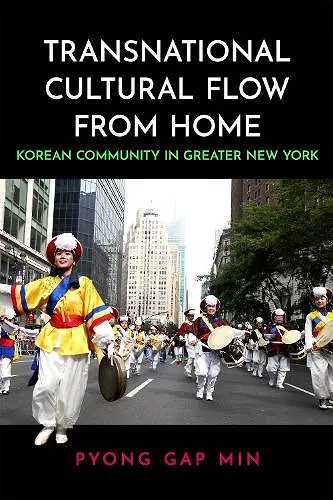Transnational Cultural Flow from Home
Korean Community in Greater New York
Format:Paperback
Publisher:Rutgers University Press
Published:9th Dec '22
Currently unavailable, and unfortunately no date known when it will be back

When the first wave of post-1965 Korean immigrants arrived in the New York-New Jersey area in the early 1970s, they were reliant on retail and service businesses in the minority neighborhoods where they were. This caused ongoing conflicts with customers in black neighborhoods of New York City, with white suppliers at Hunts Point Produce Market, and with city government agencies that regulated small business activities. In addition, because of the times, Korean immigrants had very little contact with their homeland. Korean immigrants in the area were highly segregated from both the mainstream New York society and South Korea. However, after the 1990 Immigration Act, Korean immigrants with professional and managerial backgrounds have found occupations in the mainstream economy. Korean community leaders also engaged in active political campaigns to get Korean candidates elected as city council members and higher levels of legislative positions in the area. The Korean community's integration into mainstream society also increasingly developed stronger transnational ties to their homeland and spurred the inclusion of "everyday Korean life" in the NY-NJ area.
Transnational Cultural Flow from Home examines New York Korean immigrants’ collective efforts to preserve their cultural traditions and cultural practices and their efforts to transmit and promote them to New Yorkers by focusing on the Korean cultural elements such as language, foods, cultural festivals, and traditional and contemporary performing arts.
This publication was supported by the 2022 Korean Studies Grant Program of the Academy of Korean Studies (AKS-2022-P-009).
"In this innovative and rigorous investigation of Koreans’ engagement with transnational cultural linkages to their homeland, Pyong Gap Min finds that migrants’ participation in activities that promote Korean ethnic culture facilitates both their assimilation to host country activities and their involvement in transnational cultural linkages embedded in the country of origin. This analysis significantly advances our understanding of Korean immigrants’ adaptation to the US while providing a compelling challenge to classical theories of immigrant assimilation more generally."— Steven J. Gold, author of The Israeli Diaspora
"Full of rich and fascinating material on the Korean community in the New York area, this valuable book shows that, at the same time as Korean immigrants have become increasingly incorporated into American society, they also seek to preserve and promote a wide range of homeland cultural practices and traditions."— Nancy Foner, author of One Quarter of the Nation: Immigration and the Transformation of America
ISBN: 9781978827141
Dimensions: 235mm x 156mm x 18mm
Weight: 54g
224 pages